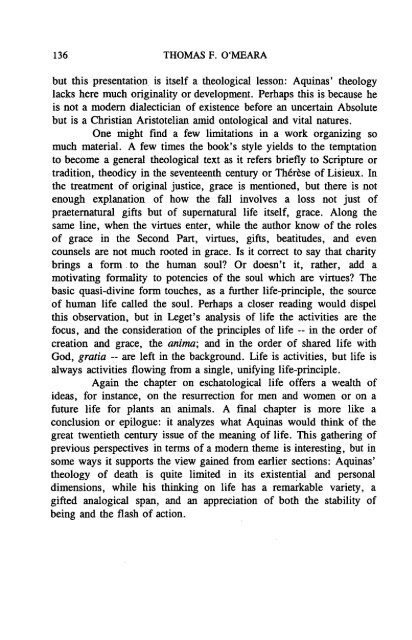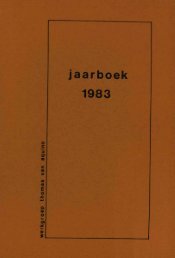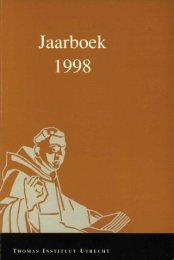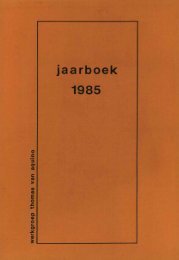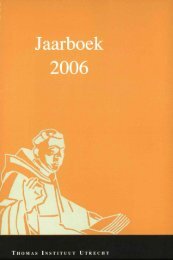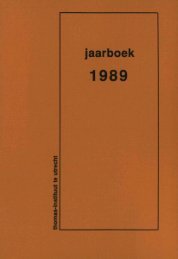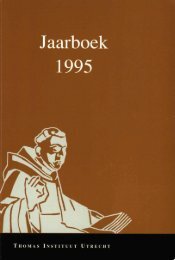Jaarboek Thomas Instituut 1997 - Thomas Instituut te Utrecht
Jaarboek Thomas Instituut 1997 - Thomas Instituut te Utrecht
Jaarboek Thomas Instituut 1997 - Thomas Instituut te Utrecht
Create successful ePaper yourself
Turn your PDF publications into a flip-book with our unique Google optimized e-Paper software.
136 THOMAS F. O'MEARA<br />
but this presentation is itself a theological lesson: Aquinas' theology<br />
lacks here much originality or development. Perhaps this is because he<br />
is not a modem dialectician of exis<strong>te</strong>nce before an uncertain Absolu<strong>te</strong><br />
but is a Christian Aristo<strong>te</strong>lian amid ontological and vital natures.<br />
One might find a few limitations in a work organizing so<br />
much ma<strong>te</strong>rial. A few times the book's style yields to the <strong>te</strong>mptation<br />
to become a general theological <strong>te</strong>xt as it refers briefly to Scripture or<br />
tradition, theodicy in the seven<strong>te</strong>enth century or Thérèse of Lisieux. In<br />
the treatment of original justice, grace is mentioned, but there is not<br />
enough explanation of how the fall involves a loss not just of<br />
prae<strong>te</strong>matural gifts but of supernatural life itself, grace. Along the<br />
same line, when the virtues en<strong>te</strong>r, while the author know of the roles<br />
of grace in the Second Part, virtues, gifts, beatitudes, and even<br />
counsels are not much roo<strong>te</strong>d in grace. Is it correct to say that charity<br />
brings a form. to the human soul? Or doesn't it, rather, add a<br />
motivating formality to po<strong>te</strong>ncies of the soul which are virtues? The<br />
basic quasi-divine form touches, as a further life-principle, the source<br />
of human life called the soul. Perhaps a closer reading would dispel<br />
this observation, but in Leget's analysis of life the activities are the<br />
focus, and the consideration of the principles of life -- in the order of<br />
creation and grace, the anima; and in the order of shared life with<br />
God, gratia -- are left in the background. Life is activities, but life is<br />
always activities flowing from a single, unifying life-principle.<br />
Again the chap<strong>te</strong>r on eschatological life offers a wealth of<br />
ideas, for instance, on the resurrection for men and women or on a<br />
future life for plants an animals. A final chap<strong>te</strong>r is more like a<br />
conclusion or epilogue: it analyzes what Aquinas would think of the<br />
great twentieth century issue of the meaning of life. This gathering of<br />
previous perspectives in <strong>te</strong>rms of a modem theme is in<strong>te</strong>resting, but in<br />
some ways it supports the view gained from earlier sections: Aquinas'<br />
theology of death is qui<strong>te</strong> limi<strong>te</strong>d in its exis<strong>te</strong>ntial and personal<br />
dimensions, while his thinking on life has a remarkable variety, a<br />
gif<strong>te</strong>d analogical span, and an appreciation of both the stability of<br />
being and the flash of action.


